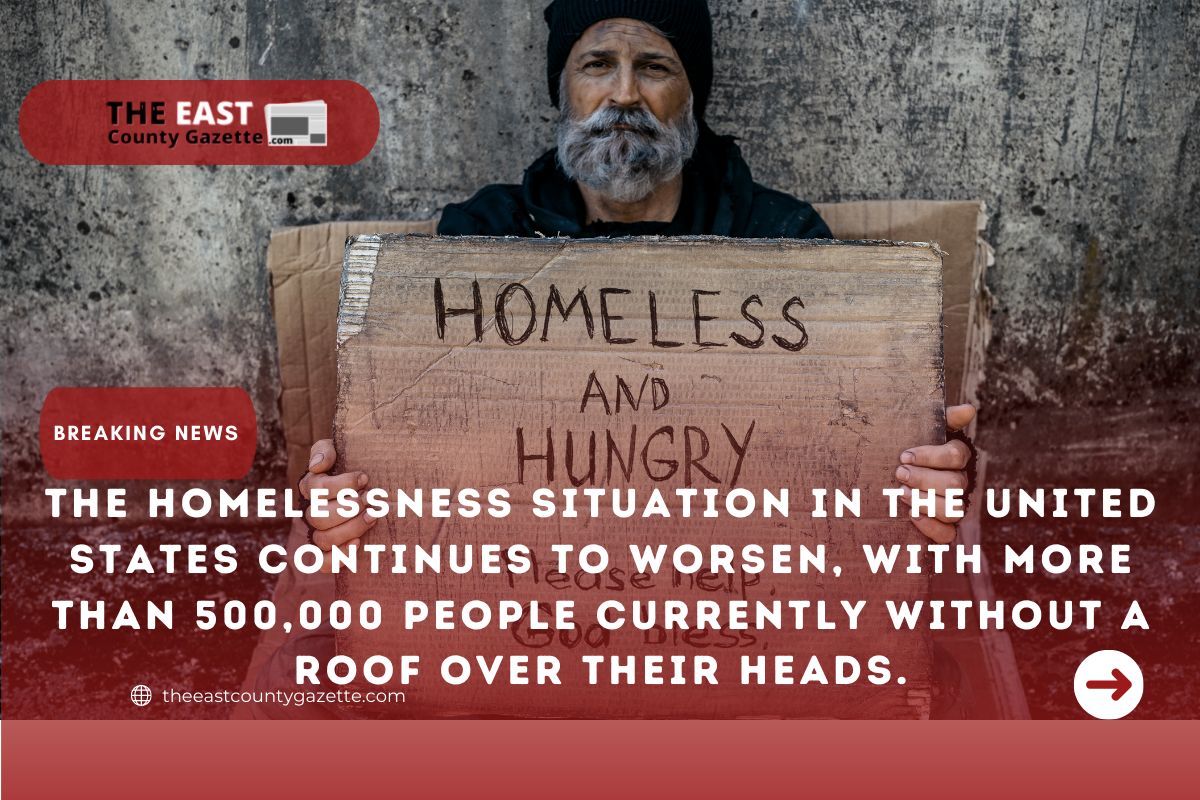The Homelessness Situation Worsens in the U.S. As Over 500,000 People Currently Without a Roof Over Their Heads.
The Covid epidemic resulted in an increase in housing costs as well as an increase in unemployment, resulting in roughly 600,000 Americans being without a place to live by 2020.
“What most people don’t know when they walk past a homeless person is that this person is costing taxpayers a significant amount of money,” said Sam Tsemberis, chief executive officer of Pathways Housing First Institute. “This person is costing the taxpayers a significant amount of money.”

In 2019, New York City spent a record-breaking $3 billion to assist its homeless population, shattering the previous record of $2 billion. California is also likely to break its previous record, allocating $4.8 billion to the same issue over the next two years, which would be a record for the state overall.
Despite increased funding, the total rate of homelessness in the United States has improved by only 10% since 2007. Certain categories, such as individuals experiencing homelessness, have fared even worse, with their rates dropping by barely 1% over the same time period.
In the words of Anthony Love, interim executive director of the United States Interagency Council on Homelessness, “Right now, we are heading the wrong way.”
“The situation with regard to homelessness is precarious, and there have been some small rises in the number of homeless people across the board.”
In its fight against homelessness, the United States has relied on a “housing first” policy for decades. Under this approach, permanent housing is provided for homeless people without regard to other factors such as sobriety or work.
“I wouldn’t be where I am today if it weren’t for the coach who guided me into housing,” said Shannon McGhee, who moved into supportive housing in 2020 after being without a place to live for four years before that.
“Being able to secure my residence first gives me the confidence that I am in command of my surroundings. “What happens here now is entirely dependent on what I make.”
Some detractors of the housing first method, on the other hand, argue that it hasn’t produced enough tangible outcomes to be considered effective.
“When the public is told that a particular policy will end homelessness, what they are expecting is that they will see fewer homeless people around,” said Stephen Eide, a senior fellow at the Manhattan Institute.
“When the public is told that a particular policy will end homelessness, what they are expecting is that they will see fewer homeless people around.” “I don’t believe we’ve seen it in the case of housing first,” says the author.

